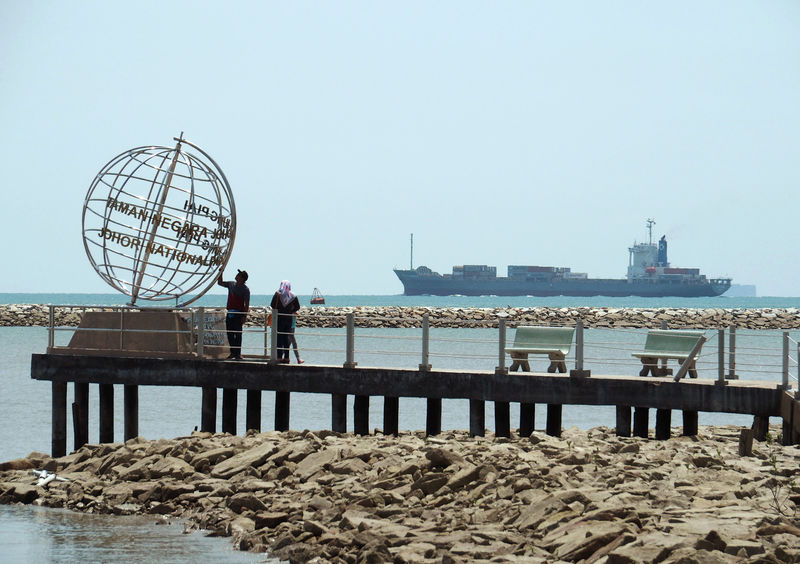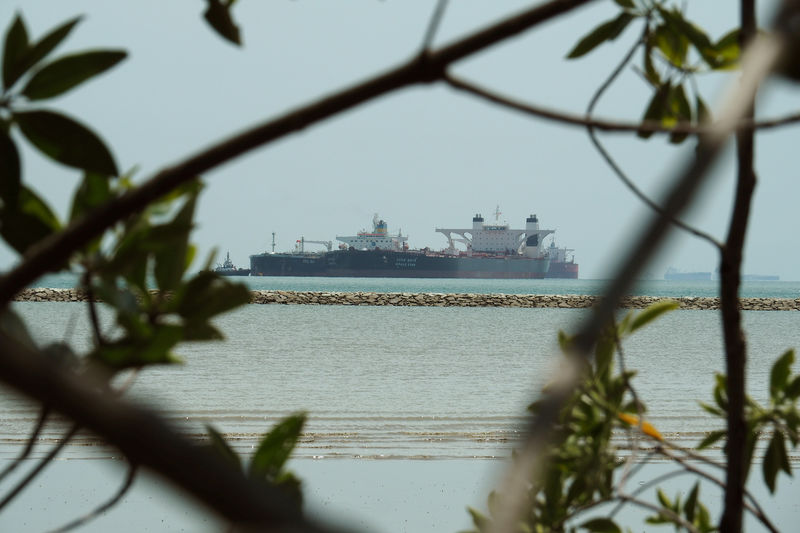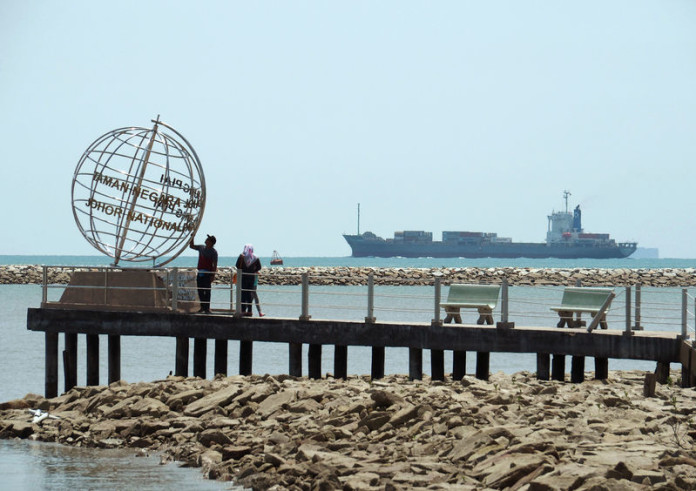KUALA LUMPUR: Once at the heart of the global spice trade, Malacca is pumping nearly US$3 billion into an ambitious plan to put itself in demand in a different hot commodity: Oil.
The Malaysian state is reclaiming land along the Straits of Malacca to build a port that can handle the biggest tankers on the planet. The target: A slice of traffic sailing on to nearby Singapore, the top but congested trading hub in a region with US$600 billion in annual oil trade – a third of global oil demand.
Funded largely by Chinese investors, port operator T.A.G. Marine and developer Linggi Base are building the 12.5 billion ringgit (US$2.82 billion) Kuala Linggi International Port (KLIP) to offer storage, repair and refuelling services. At Singapore, 200km away, ships can spend costly time just waiting to deliver or take on goods, refuel or undergo maintenance work.

A container ship enters the Singapore Strait for the Strait of Malacca, as tourists stand at mainland Asia’s southern most point in Johor, Malaysia. (Photo: REUTERS/Henning Gloystein)
With Singapore’s port rules also banning floating storage and ship-to-ship (STS) transfers, the potential for savings and streamlined business is clear for KLIP users like trading company Agritrade Resources .
“Through our clients who are oil majors and oil traders, we see a competitive edge in locating our floaters (storage facilities) in KLIP resulting from lower costs and less congestion,” said Ng Xinwei, Chief Executive of Agritrade, which owns three supertankers.
Using 620-acres of reclaimed land, KLIP this month launched construction of a port with 1.5 million cubic metres of oil storage capacity, and dry docks to handle the biggest of oil tankers, hoping for completion within a decade.
KLIP is aware business is now dwarfed by Singapore, which handles well over 100,000 vessel calls a year, compared to KLIP’s few thousand per year. KLIP did not provide targets, but analysts estimated it could handle three times current volumes within a decade.
“Many of the shipyards in Singapore have been fully booked for three years,” said Saifullah Noor, Chief Executive of T.A.G. Marine. “Given the close proximity, we aren’t competing with Singapore, but are actually complementing them.”
PORT SERVICES IN DEMAND
Officials in Singapore did not comment on specific developments in Malaysia, but have previously said that growth in oil markets is strong enough to warrant further investment.
That’s a view shared among shipping industry executives, though some also see significance in Malacca’s project being backed by Chinese investors.
“I see this as a mainly China-led real estate investment project, under the ‘belt-and-road’ umbrella of Chinese economic expansion into Southeast Asia,” said Ralph Leszczynski of shipping brokerage Banchero Costa.
The project is the latest in a string of developments trying to capture a piece of Asia’s rising oil demand. But while the waterways along the Straits of Malacca and Straits of Singapore – some of the busiest in the world – have created huge demand for port services, success is not guaranteed.
Malaysia’s Asia Petroleum Hub project, to the West of Singapore, launched in 2005 but was wound up in 2012 amid ballooning costs.
GETTING IT RIGHT?
At KLIP, operator T.A.G. Marine remains confident that the early stages of the port development project show a track record of success that can continue.

Supertankers used as floating oil storage vessels in Johor. (Photo: REUTERS/Henning Gloystein)
KLIP now has one of the region’s largest STS cargo transfer and floating oil storage zones, and has already handled some of the world’s largest oil supertankers, like the ultra large crude carrier “TI Europe” that is half a kilometre long.
Singapore clients have been paying attention.
One future potential KLIP customer is Singapore-based Toyota Tsusho Petroleum, part of Japanese trading company Toyota Tsusho Corp. The fuels supplier has signed a memorandum of understanding (MOU) with T.A.G. Marine to explore bunkering.
“In KLIP, we have a newly developing port that will allow us to diversify our operations and better deploy our resources,” said Nobuyuki Iida, Toyota Tsusho Petroleum general manager.
Beyond the infrastructure, industry players say there’s a need to streamline some of Malaysia’s processes and regulations.
“To get it right, (bunker suppliers) need support from the (Malaysia) government to have proper pricing and support from oil majors for cargoes to be competitive with Singapore,” said Wan Mohd Fauzi, director of Malaysia-based bunker fuel supplier Alamgala Resources.
(Reporting by Roslan Khasawneh; Editing by Henning Gloystein and Kenneth Maxwell)





